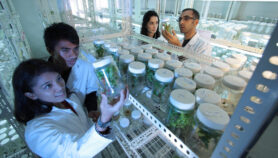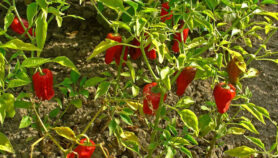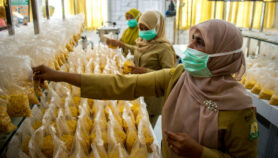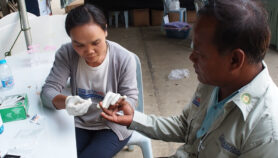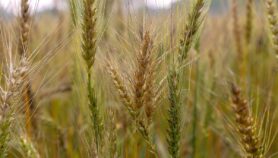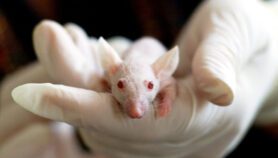By: Neena Bhandari
Send to a friend
The details you provide on this page will not be used to send unsolicited email, and will not be sold to a 3rd party. See privacy policy.
[SYDNEY] Australian researchers see potential for increasing yields of staple crops like wheat and rice by transplanting into them enzymes taken from the common panic grass (Panicum spp.).
Lead researcher Robert Sharwood from the Australian National University (ANU) says, “We are aiming to enhance the growth and yield of crops by transplanting more efficient forms of the rubisco enzyme into them. We found considerable variability in the efficiency of rubisco from different panic grasses that capture carbon dioxide from the atmosphere to enable its conversion into carbohydrates under a wide range of temperatures.”
“We are aiming to enhance the growth and yield of crops by transplanting more efficient forms of the rubisco enzyme into them.”
Robert Sharwood, Australian National University
Panic grasses are widely distributed throughout the world and mostly used as forage for grazing animals. It can be classified either as C3 or C4 depending on the different pathways these plants use to capture carbon dioxide during photosynthesis.
The researchers chose rubisco because it is the central rate-limiting step of carbon fixation in higher plants. “We have known for some time that there is large diversity in C4 rubisco kinetics among C4 but we needed to interrogate them further. To do this, we needed to completely characterise the kinetic parameters for each rubisco. This is where we established our interesting kinetic trends at standard temperatures. The most telling part of this survey within panic grasses is the high-resolution temperature response of the catalytic parameters,” Sharwood tells SciDev.Net.
When the researchers modelled this response, using the widely accepted biochemical photosynthetic rate model of Farquhar, von Caemmerer and Berry, they discovered that some of the rubiscos would potentially offer benefits to carbon dioxide fixation under future climate scenarios.
“This is based on the improvements we have seen in carboxylation efficiency and specificity for carbon dioxide as opposed to oxygen. We are currently working on how to transfer these improvements into wheat and rice. Crops such as wheat and rice can have foreign genes placed in the nucleus by using agrobacterium transformation,” says Sharwood.
As the world population is expected to reach 10 billion by 2050, the findings are significant for using the natural genetic diversity of grasses to secure important food crops. The United Nations’ 2015 report Achieving Zero Hunger: The Critical Role of Investments in Social Protection and Agriculture states that nearly 800 million people, most of them in rural areas, still do not have enough food to eat.
World Vision Australia’s food security advisor, Brian Hilton, tells SciDev.Net that the new development could lead to more productive pasture land, especially in the face of increasing carbon dioxide levels. “The gene for that enzyme could probably be transferred to many other crop plants, such as corn, creating more productive varieties,” he says.The research, conducted by members of the ARC Centre of Excellence for Translational Photosynthesis, the ANU Research School of Biology and the Hawkesbury Institute for the Environment, was published in Nature Plants on 28 November.
This piece was produced by SciDev.Net’s South-East Asia & Pacific desk.
This article was made possible with support from Monsanto.




